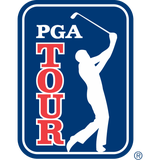
Star group of Mickelson, McIlroy, Spieth crash at Shinnecock
SOUTHAMPTON, N.Y. (AP) -- Three holes into his 27th U.S. Open, Phil Mickelson called over a rules official for a question rarely heard.
"Is there a rule that allows me to see the ball when I hit it?" he asked.
There was no relief for Mickelson. Not on the 12th hole at Shinnecock Hills. Not at many others.
And he wasn't alone.
Mickelson was in the marquee group Thursday morning, which featured three players who have a dozen majors among them. And because USGA officials try to have a sense of humor, they put together the only three active players who have three legs of the career Grand Slam.
Mickelson shot a 77. He had the lowest score in the group.
Jordan Spieth shot a 78, his highest score in a major.
Rory McIlroy, who came bouncing into this major full of confidence and affection for Shinnecock Hills, was 10-over par through 11 holes. He played even par the rest of the way and shot an 80 for his highest score in the U.S. Open.
How did this happen?
Hard to say. Mickelson and McIlroy refused requests to speak to the media.
"There were certainly some dicey pins," Spieth said. "But at the same time, there was guys that shot under par. So I could have played better."
This was a painful to watch from the start at No. 10, where Spieth made bogey with a three-putt from long range and Mickelson went over the green. That's to be expected at the U.S. Open.
It quickly unraveled for Spieth.
From a bunker right on the par-3 11th, his shot came out strong toward the hole and went just far enough to catch a slope and roll out some 15 yards. His first pitch came back to his feet. His second pitch nearly did. He used a putter and hit that 6 feet by the hole.
Twenty-five minutes after he teed off, it looked as though his U.S. Open could be over. He made the putt for triple bogey, leaving him at 4 over through two holes.
"When I hit the bunker shot, I thought I hit a good shot," Spieth said. "I played the aggressive route and it hurts you. You can't really do that at the U.S. Open. When you're out of position you have to just give yourself a chance to save par, and if you make bogey, you make bogey."
Then, it was Mickelson's turn.
He constantly laid well back off the tee to make sure he kept it in the short grass, and Mickelson hit 13 out of 14 fairways. Little good that did him. He tugged his approach with a left-to-right wind and it landed in grass so deep the marshal couldn't find it.
Mickelson explained to the volunteer that if the player stepped on the ball, it would be a penalty. But it was OK if the volunteer accidentally stepped on it.
"You've got to find it, man," Mickelson said to him. "Get in there and find it."
The marshal eventually did. Mickelson got a wedge and lost it again. That's when he called for the ruling, didn't get it, and did well to make bogey.
McIlroy's turn was on No. 14, when he went right into the hay and needed a search party of about a dozen to find it. McIlroy didn't need any help finding the next one, because he took a whack and saw it move only 6 feet. That led to one of his two double bogeys.
And so it went for more than five hours. They didn't all hit the same green in regulation until their sixth hole.
Mickelson did well to avoid a big number. He just made eight bogeys.
That strategy of playing the par-5 16th hole didn't work out so well. Mickelson was in prime position for a birdie on the 16th with a wedge into the green. He hit it thin and over the green, and turned a birdie chance into a soft bogey.
A gust got him on the sixth hole, and the ball buried just beneath the lip of a bunker. Mickelson turned at a 90-degree angle and played back toward the fairway, pitched up to about 12 feet and made it for bogey.
That felt like a par. That had to do, because there were so few birdies.
Even being 4-over after two holes, Spieth figured even par would be a reasonable start on a day like this, a course like this. And he made a long birdie at No. 9 to make the turn at 4 over. Instead, he bogeyed the opening two holes of the front nine. And after his birdie on the par-5 fifth, he missed the sixth fairway and made another bogey. And there were not many birdie opportunities to make up for that.

